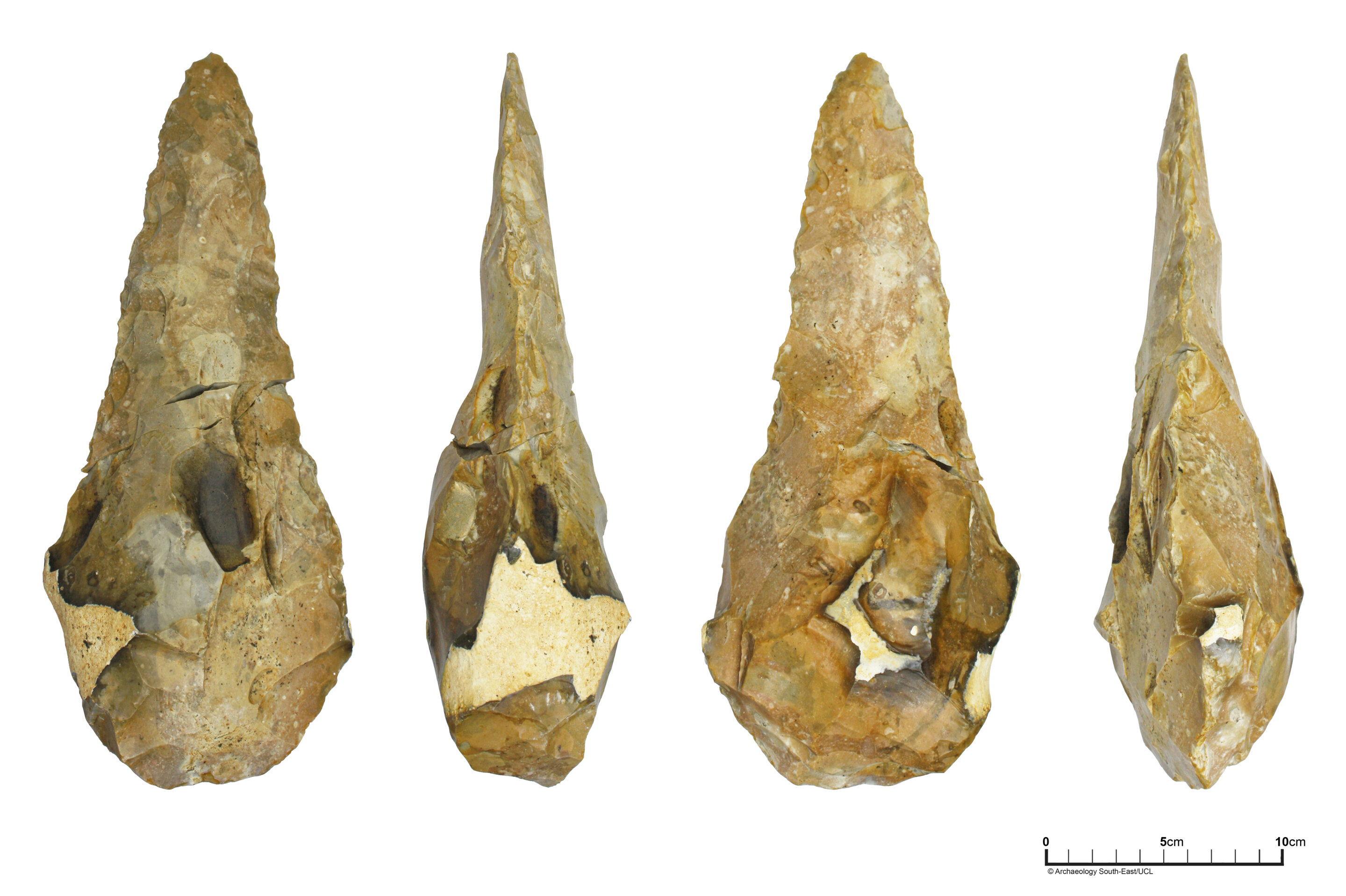Researchers at the UCL Institute of Archaeology have made a significant discovery in Britain. They have found some of the largest early prehistoric stone tools in the country.
The excavation took place in Kent as part of the development of the Maritime Academy School in Frindsbury. The researchers from UCL Archaeology South-East uncovered prehistoric artifacts in deep Ice Age sediments on a hillside above the Medway Valley.
In their research published in Internet Archaeology, the team revealed that they found 800 stone artifacts estimated to be over 300,000 years old. These artifacts were buried in sediments that filled a sinkhole and an ancient river channel.
Among the artifacts discovered were two exceptionally large flint knives referred to as “giant handaxes.” Handaxes are stone tools that have been chipped on both sides to create a symmetrical shape with a long cutting edge. It is believed that these tools were primarily used for butchering animals and cutting meat. The two largest handaxes found at the Maritime site have a distinct shape with a long, finely worked pointed tip and a thicker base.
Senior Archaeologist Letty Ingrey from the UCL Institute of Archaeology stated, “We refer to these tools as ‘giants’ when they measure over 22cm in length, and we have two in this size range. The largest one, measuring a colossal 29.5cm, is one of the longest ever discovered in Britain. ‘Giant handaxes’ like these are typically found in the Thames and Medway regions and date back over 300,000 years.”
2023-07-06 05:48:04
Post from phys.org
